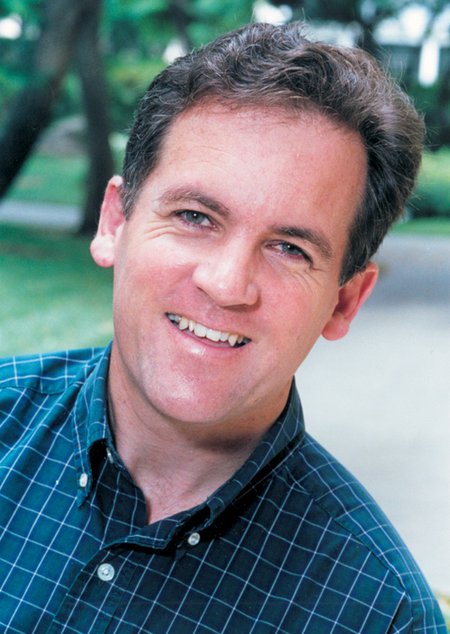| 1990 — 1991 |
Goodwin, David |
N/AActivity Code Description:
No activity code was retrieved: click on the grant title for more information |
Flame Synthesis of Diamond @ California Institute of Technology
The proposed research is a fundamental study of diamond synthesis in flames. Diamond growth in low-pressure, one- dimensional H2/O2/Ar-CH4 and C2H2/O2/Ar flames will be investigated and the conditions for which growth occurs will be determined. The experiments are designed to provide a well-characterized growth environment with known chemistry. Growth experiments will be carried out using both thin-wire micro-substrates which do not perturb the flame significantly and large-area substrates designed to maintain a one- dimensional flowfield in the gap between the burner and substrate. The one-dimensional flowfield is predicted to result in uniform large-area film growth. The flames will be thoroughly characterized. Stable species profiles will be measured using a quartz probe and an on-line sampling mass spectrometer, and radical profiles (H, CH3, C, OH, CH, and C2) and temperature profiles will be measured optically using laser-induced fluorescence, resonance-enhanced multiphoton ionization, and vibrational Raman scattering. The measurements will be made both with and without the substrate, and will be compared to the predictions of a one-dimensional reacting flow model with detailed kinetics. These experiments will be the first study of diamond growth in a truly well- characterized environment, and will yield significant information on the processes responsible for diamond growth.
|
0.915 |
| 1990 — 1996 |
Goodwin, David |
N/AActivity Code Description:
No activity code was retrieved: click on the grant title for more information |
Presidential Young Investigators Award: Combustion Synthesisof Diamond @ California Institute of Technology
A low pressure, flat flame burner will be used to grow diamond under highly controlled and well characterized conditions. Low pressure, porous plug-stabilized flames have a simple one- dimensional structure which lend themselves to accurate modeling and diagnostic probing, providing a significant advantage for fundamental studies over other types of diamond growth reactors. Stable species concentrations will be measured in the boundary layer of a temperature-controlled substrate placed in the flow. Radical species and temperatures will be measured using laser-induced fluorescence, resonantly-enhanced multiphoton ionization, and Raman scattering techniques. IR/visible sum generation will be used to detect molecules adsorbed on the substrate during diamond growth. A reacting flow numerical model will be developed and predicted species, temperature, and growth rates will be compared to experimentally measured values. Diamond films appear very promising for tribological, optical, and electronic applications, but the quality of currently- grown films is insufficient for most uses. The experiments planned will be the first to study diamond growth in a thoroughly characterized environment, and should yield significant information on the processes responsible for maximizing growth rate and controlling quality.
|
0.915 |
| 1996 — 1999 |
Goodwin, David
Atwater, Harry (co-PI) [⬀] |
N/AActivity Code Description:
No activity code was retrieved: click on the grant title for more information |
Relation of Gas Phase Species to Film Growth by Pulsed Laser Deposition @ California Institute of Technology
Goodwin 9529309 In the last five years, considerable effort has been devoted to diagnostic analysis of the plumes of matter produced when pulsed lasers are used to ablate a solid target. this has been primarily motivated by a desire to better understand the basic physical and chemical processes important to pulsed laser deposition, a newly popular thin film growth technique which is finding ever-increasing application to growth of superconductor, insulator and semiconductor structures. The objective from laser-induced plumes, rather than to study exclusively plume formation. The approach taken is a combined experimental and theoretical effort. Briefly, the aim is to determine the extent to which film stoichiometry and microstructure are determined by: Evolution of the energy distributions (both translational and internal) of the gas phase species as the plume approaches a substrate for thin film growth. The incident species' energy will affect the sticking probability, the dissociate probability and mode of dissociation and incorporation (i.e., adsorption or implantation) of gas phase constituents into the films. Evolution of species distributions as the plume moves from the target to the substrate, including formation of reactive intermediates in the gas phase, which then condense onto the solid surface. Prominent aspects of the experimental work are laser-induced fluorescence (LIF) measurements of gas phase plume an intermediate species in their electronic ground states, in situ surface analysis by reflection high energy electron diffraction (RHEED) and a complementary core level spectroscopy technique developed at Caltech, reflection electron energy loss spectroscopy (REELS). Various forms of postgrowth film microstructural analysis will be used to analyze film stoichiometry, density, crystallinity, bonding state, and optical properties. The theoretical work will involve several efforts, including molecular dynamics (MD) simulations of energetic plume-surface interact ions and Director-Simulation Monte Carlo (DSMC) simulations of gas-phase plume dynamics, including chemical kinetics and substrate interactions. ***
|
0.915 |
